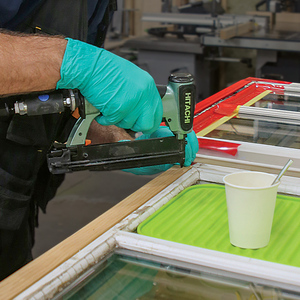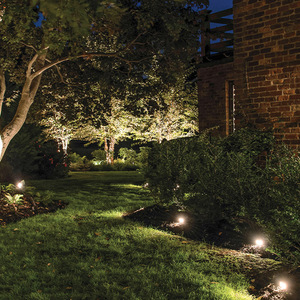Anyone have any experience using buried pipe/tubes to circulate air from outside into a home for summer time cooling? Seems like it shouldn’t be to difficult other than the potential for mold buildup in tubes. I’m thinking about trying on my own house. We didn’t put in ac when building and have radiant heat. most of summer isn’t too bad but there are times I wouldn’t mind something more than fans blowing. I’ve got the digging equipment so that’s not an issue.
I worked on a big old mansion a couple of years ago that had laid up stone “tunnels about 2′ wide by 18” high running through the backyard and back into the basement. The owner said they were cooling tunnels that in the early 1900’s would be opened up to allow cool air to ciculat into house. They were ducted up through the floor. Not sure if it was a passive or active system, the ductwork had been torn down.
Discussion Forum
Discussion Forum
Up Next
Video Shorts
Featured Story

Old masonry may look tough, but the wrong mortar can destroy it—here's how to choose the right mix for lasting repairs.
Featured Video
SawStop's Portable Tablesaw is Bigger and Better Than BeforeHighlights
"I have learned so much thanks to the searchable articles on the FHB website. I can confidently say that I expect to be a life-long subscriber." - M.K.
Fine Homebuilding Magazine
- Home Group
- Antique Trader
- Arts & Crafts Homes
- Bank Note Reporter
- Cabin Life
- Cuisine at Home
- Fine Gardening
- Fine Woodworking
- Green Building Advisor
- Garden Gate
- Horticulture
- Keep Craft Alive
- Log Home Living
- Military Trader/Vehicles
- Numismatic News
- Numismaster
- Old Cars Weekly
- Old House Journal
- Period Homes
- Popular Woodworking
- Script
- ShopNotes
- Sports Collectors Digest
- Threads
- Timber Home Living
- Traditional Building
- Woodsmith
- World Coin News
- Writer's Digest


















Replies
There are a couple of things I thought of off hand that you should check before building. Radon could be introduced into the house through them. Drainage or slope in the tubes so there is a low humidity in them.
We had a house down the street from us that had a pipe buried underground for air intake. The grill at the end was just off the street. The neighbor three houses up the street had a cesspool that had failed and he just ran his sewage into the ivy in the front yard. It would overflow most of the time and run down the street right in front of the grill. They blocked off the intake after they figured out what the neighbor was doing.
the intake for the air was in the wrong place and the guy with the sewage... well what can i say?
i've got one... runs under the drive..... under the garage.... and into the basement
30" aluminum culvert pipe.... about 60'
me and my nephews have crawled thru it a couple times about '87 or so
never did hook a blower up to it
finally stuck a wall in front of it when we listed the house..... the real estate agent got tired of trying to explaing what it was all about
Mike Smith Rhode Island : Design / Build / Repair / Restore
Edited 3/1/2008 10:06 am ET by MikeSmith
Seem's as though radon wouldn't be a problem as long as all joints were sealed underground. I envisioned something like 4" sch 20 {sewer pipe} backfilled with sand down about 3-4' with the ends terminating above ground with protective enclosure and screening/filter, pitched for drainage, with blower in basement? I'm on 40 acres, next closest neighbor 1/4 mile away, surrounded by wooded ravines so no problem as far as sewers. I wouldn't be near my own septic either. Good thoughts though, thanks.
It seems pretty obvious but I just thought I'd bring it up. If the intake air is water laden it might condense on the walls of the pipe. It depends on you climate when you are using them. If you pitch the pipe to some location where the water can be dealt with it should be fine.
Just an idea. I'm going to plant a couple a fragrant rose bushes by a window that we will open for ventilation. You could do the same with your intake terminations. there are some really nice plants you can use like lilacs or whatever suits your fancy. The house should smell real nice and your wife (if you have one) will be duly impressed.
I plan to surround this window with the roses and maybe put an awning over it to channel in the rose scent. The roses are due here any day. I can't wait.
The ones I've known of are much larger diameter pipes (plastic culvert would work well). Think of the intakes as windows. A 4" diameter window won't deliver much air without major power assist.
The beauty of earth tubes is they can be part of a solar powered ventilation system - using the sun to cool your house!
Ideally, a high glazed cupola or clerestory windows with operable vents would act as a solar chimney and create an updraft that would draw the cooled air in at ground level through the earth tubes.
The two primary problems are moisture/mold and critters.
A good overview is available here:
http://www.eere.energy.gov/consumer/your_home/space_heating_cooling/index.cfm/mytopic=12460
Riversong HouseWright
Design * * Build * * Renovate * * ConsultSolar & Super-Insulated Healthy Homes
Edited 3/1/2008 9:14 pm ET by Riversong
Have you read the book "Passive Annual Heat Storage" by John Hait? Quite a bit of it is dedicated to earh tubes.
I'll eat your peaches, mam. I LOVE peaches!
Thanks,
I'll try and check it out.
I would like to suggest that you look around for a working system that is in use and the owners are happy with.
There are some design issue's that should be researched.
The smaller the pipe, the more resrtiction there will be.
Larger pipe will allow more volume, with less friction from the side wall of the pipe.
I have wanted to try this type of setup too.
I just haven't done the homework to see what gives the best bang for the buck.
A local radio station uses them to help cool their transmitter. Three or four large dia. PVC pipes sticking up out of the ground with some sort of homemade caps on them. I don't know what sort of fan, filter etc. is on the inside.
Fairly arid climate here.
The school in town was built in the 20's. Every room has a hollow chase to it which leads to the attic. On the roof is a large round vent.
The chase is all closed off now and A/C installed.
I've been told that they would open the vents into the chase and crack the windows at night. Convection would then pull the cool night air thru the building.
Oldtimers said they can't remember being uncomfortably hot.
Under the category of "fun projects for your own house" I came across an interesting idea that makes perfect sense for homes with radiant heat. For each heating zone, an additional loop would be made under the frost line to the exterior of the building, say encased in a few inches of concrete alongside the footer.
In the winter the external loops are shut off with valving and do not circulate water. In the summer the external loops are opened up and the connection to the boiler is shut down.
This wouldn't solve the cooling problem completely and it would create a strange temperature differential (just as radiant heating in the ceiling does in the winter), but it was nonetheless interesting.
I have absolutely no idea how effective it would be or a rule of thumb for how long the tubes need to be on the exterior to make a difference.
Beer was created so carpenters wouldn't rule the world.
don.. i don't think it would be very effective... it might even cost more electricity to run the pumps than to run a few small window sized A/C's
heat moves from hot to cold..so to chill the air it would have to give up it's heat to the floor, then the floor to the slab, the slab to the water and the water back to the earth
very small delta-T's in each caseMike Smith Rhode Island : Design / Build / Repair / Restore
You're probably right. A big step up are the hydronic heating/cooling systems that I've only heard about in commercial applications, but there must be downsized versions. It essentially runs chilled water through the pex for more heat transfer. If the concrete has enough mass it would take care of itself in most situations.
Beer was created so carpenters wouldn't rule the world.
One common system was an open loop radiant and during the summeer domestic water would be run through the slab before being used.The problem is that that to get much cooling the slab ahs to be cool enough that you often get condensation on the floor..
.
A-holes. Hey every group has to have one. And I have been elected to be the one. I should make that my tagline.
Mike
Bump.
Rich